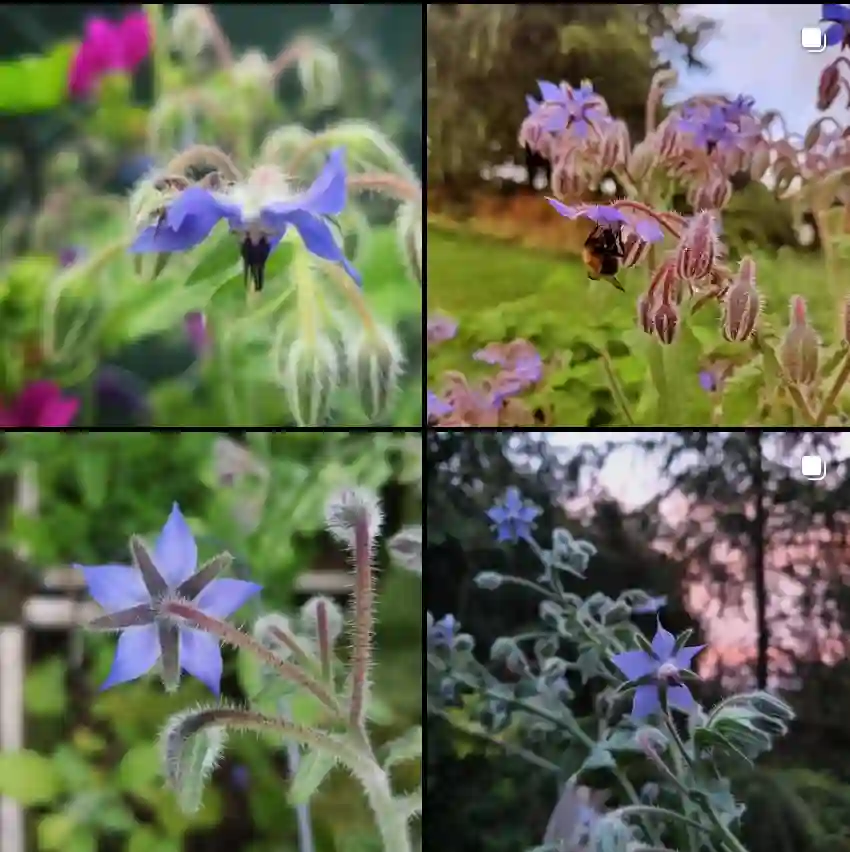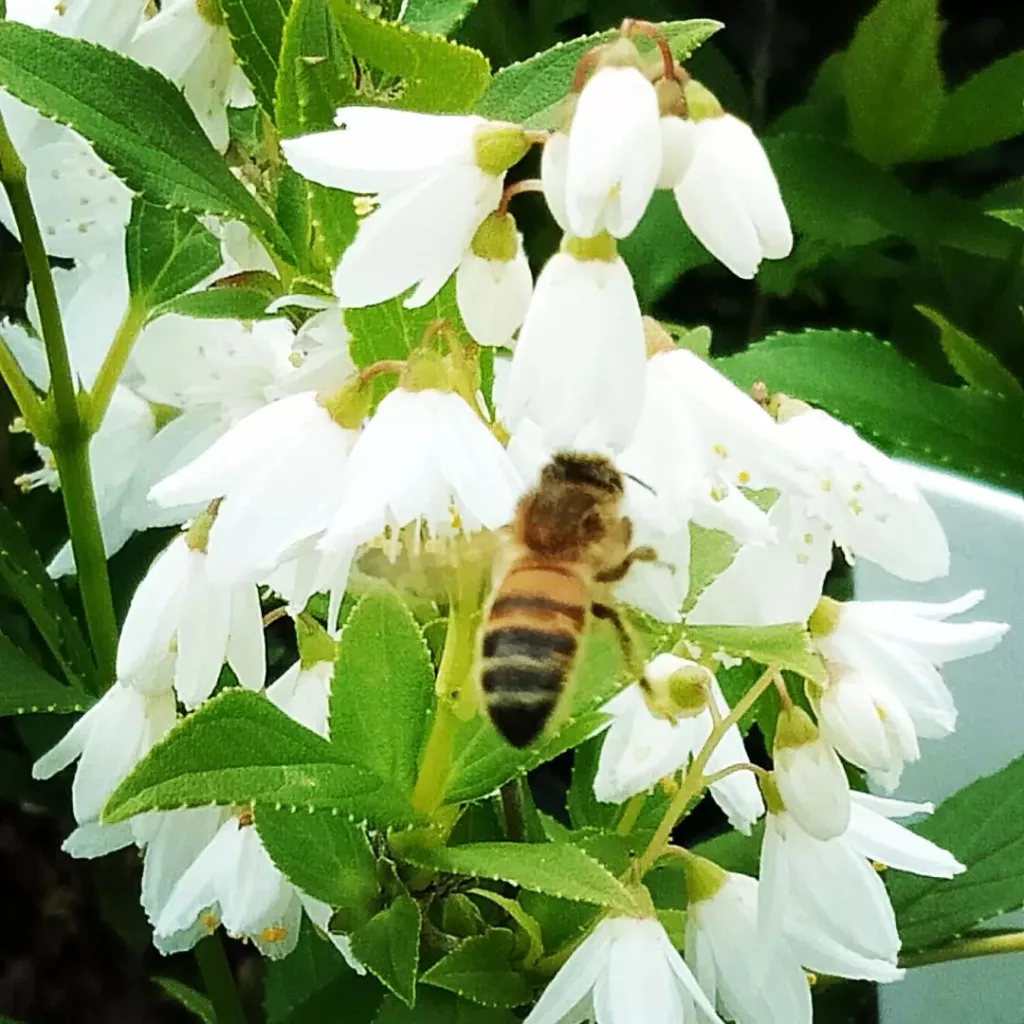
In the vibrant tapestry of houseplants, few can rival the captivating allure of the Calathea Musaica, often affectionately known as the Network Plant. Its leaves are a living masterpiece, adorned with an intricate pattern of dark green veins crisscrossing a lighter green background, creating a mesmerizing mosaic that truly lives up to its name. This plant, scientifically classified as Goeppertia kegeljanii (though widely recognized by its former botanical name, Calathea musaica), is a jewel in the crown of any indoor plant collection.
Originating from the humid understory of the Brazilian rainforests, the Calathea Musaica brings a touch of the exotic to our homes. It belongs to the Marantaceae family, famously known as the “Prayer Plant” family, a name derived from their unique characteristic of nyctinasty – the fascinating habit of folding their leaves upwards at night, as if in prayer, and unfurling them again with the morning light. While the Calathea Musaica’s leaf movement is less pronounced than some of its relatives, its subtle dance adds to its enigmatic charm.
This article invites you on a comprehensive journey to understand and master the care of this exquisite plant. Beyond the detailed care guide, we’ll embark on a personal “time-lapse” narrative, sharing the milestones and learning experiences of nurturing a Calathea Musaica from its humble beginnings to a thriving botanical specimen.
Unveiling the Network: What Makes Calathea Musaica Unique?
The most striking feature of the Calathea Musaica is undoubtedly its foliage. Each ovate leaf is a canvas of nature’s artistry, displaying a precise, almost geometric pattern of fine, dark green lines that resemble a finely woven net or a complex digital circuit board. This distinctive venation is what earned it the evocative common name “Network Plant.” The lighter green areas between these veins provide a stark yet harmonious contrast, making the pattern pop with three-dimensional depth.
Unlike some Calatheas that boast vibrant purples or deep reds on their undersides, the Calathea Musaica maintains a more subdued green on both surfaces, allowing its intricate top-side pattern to be the undisputed star. It grows in a clumping habit, forming a lush, dense bush of foliage that can reach up to 60 cm (24 inches) in height indoors, creating a significant visual impact.
Beyond its aesthetic appeal, the Calathea Musaica is also celebrated for being non-toxic to pets and humans, making it a safe choice for homes with curious furry friends or small children. Its natural habitat, the shaded forest floor, has endowed it with specific environmental preferences that, once understood, make caring for it a deeply rewarding experience.
The Gardener’s Time-Lapse: My Journey with Calathea Musaica
My fascination with Calatheas began with their reputation for being “fussy.” As a seasoned gardener, I saw it as a challenge, and the Calathea Musaica, with its captivating network pattern, was the first one I decided to bring home. Here’s a time-lapse of my personal journey with this remarkable plant.
Month 1: The New Arrival – A Tiny Network Unfurls
I remember the day I brought my Calathea Musaica home. It was a small specimen, barely 15 cm tall, nestled in a tiny nursery pot. Its leaves, though few, already displayed that incredible network pattern. My initial excitement was palpable, but so was a hint of apprehension, knowing Calatheas demand specific conditions.
I placed it in my east-facing living room, a spot that receives bright, indirect morning light. I made sure it was away from any drafts from windows or air conditioning vents. The first few days were a nervous dance of observation. I checked the soil moisture constantly, resisting the urge to overwater, and misted around it a couple of times a day. I even bought a small humidifier, a new addition to my plant arsenal, to ensure the humidity was consistently above 60%. The tiny leaves seemed to stand a little straighter each morning, a silent affirmation that it was beginning to settle in.
Month 3: Establishing Roots & The First New Growth
The initial adaptation period was over, and my little Network Plant began to show signs of truly establishing itself. The most exciting moment was spotting the first tightly rolled new leaf emerging from the center of the plant. It looked like a tiny, green cigar. Over the next week, I watched in awe as it slowly unfurled, revealing its perfect, unblemished network pattern. This was a significant milestone, a clear signal that my care efforts were paying off.
I learned to trust the soil more, watering only when the top inch felt dry to the touch, and always using filtered water that I let sit overnight to dissipate chlorine. I noticed how quickly the plant absorbed water, a testament to its tropical origins. The humidity remained a priority; the humidifier ran almost continuously, and I placed the plant on a pebble tray filled with water, ensuring the pot wasn’t sitting directly in the water.
Month 6: The Growth Spurt & The Humidity Dance
As spring transitioned into summer, my Calathea Musaica entered a period of vigorous growth. New leaves appeared more frequently, each one larger and more vibrant than the last. The plant was visibly bushier, and its network patterns seemed to deepen in intensity. This was its “teenage” phase – growing rapidly but still demanding attention.
It was during this time that I faced my first minor setback: a few leaf tips started to turn brown and crispy. My heart sank. I immediately checked the humidity, and while it was good, it wasn’t consistently high enough during a particularly dry spell. I also realized I had been a bit lax with my filtered water, occasionally using tap water in a hurry. I doubled down on humidity, ensuring the humidifier was always topped up and considering grouping it with other plants to create a microclimate. I also became meticulous about using only filtered water. Within a couple of weeks, the browning stopped, and while the damaged tips remained, the new growth was pristine. This taught me the critical importance of consistent humidity and water quality.
Month 12: Maturity & Minor Setbacks
By its first anniversary with me, my Calathea Musaica was a magnificent specimen, a dense clump of intricate foliage that commanded attention. It had grown to about 40 cm in height and width. It was thriving, but even thriving plants can encounter challenges. I discovered a few tiny, almost invisible webs on the undersides of some leaves – spider mites, the bane of many indoor gardeners.
My immediate response was to isolate the plant. I then gently wiped down every leaf, top and bottom, with a damp cloth, followed by a diluted neem oil spray. I repeated this treatment every few days for a couple of weeks, and the spider mites were eradicated. This experience reinforced the need for regular inspection and proactive pest management. It also showed me the resilience of the plant; with prompt action, it bounced back beautifully.
Year 2-3: Repotting & Propagation Adventures
After two years, my Calathea Musaica was quite root-bound, with roots starting to peek out of the drainage holes. It was time for its first repotting. I chose a pot only slightly larger than the previous one, ensuring it still had good drainage. I prepared a fresh, airy soil mix, combining peat moss, perlite, and a bit of orchid bark for extra drainage and aeration.
During the repotting process, I noticed the plant had formed several distinct clumps of rhizomes. This was my opportunity to try propagation by division. I carefully separated one of the clumps, ensuring it had a good portion of roots and at least two healthy leaves. I potted it up in its own small pot, treating it gently as a new “baby” plant. The mother plant, refreshed with new soil, continued to flourish, and the division, after a brief period of adjustment, also began to put out new leaves. It was incredibly satisfying to expand my collection from a single plant.
Ongoing Journey: The Joy of the Network Plant
Now, several years into our journey, my Calathea Musaica continues to be a source of immense joy. It’s a testament to consistent care and understanding its specific needs. It reminds me that gardening is a continuous learning process, a “time-lapse” of small victories and minor adjustments that culminate in the beauty of a thriving plant. Its unique foliage never ceases to amaze me, and it remains one of the most commented-on plants in my collection.
Comprehensive Care Guide for Thriving Calathea Musaica
Caring for the Calathea Musaica, while sometimes perceived as challenging, is ultimately about mimicking its native rainforest environment. With attention to detail and consistency, your Network Plant will flourish.
Light: The Dappled Canopy Effect
Calathea Musaica thrives in bright, indirect light. In its natural habitat, it grows beneath the dense canopy of trees, receiving filtered sunlight. This means:
- Ideal Placement: An east-facing window is often perfect, providing gentle morning sun. A few feet back from a south or west-facing window, or behind a sheer curtain, can also work.
- Avoid Direct Sunlight: Direct sun will scorch its delicate leaves, causing them to fade, turn yellow, or develop crispy brown patches. The intricate network pattern can also become less vibrant.
- Signs of Too Much Light: Fading leaf patterns, scorched spots, or leaves curling inwards as if trying to protect themselves.
- Signs of Too Little Light: Slowed growth, smaller new leaves, or the patterns appearing less defined. The plant might also stay wet for too long after watering, increasing the risk of root rot.
Watering: The Rainforest Floor’s Embrace
Consistent moisture is crucial for Calathea Musaica, but it detests soggy feet. The key is to keep the soil consistently moist but never waterlogged.
- Frequency: Water when the top 2.5−5 cm (1−2 inches) of soil feels dry to the touch. This might be every 3-5 days in warmer months and less frequently in winter. Always check the soil before watering; don’t stick to a rigid schedule.
- Water Quality: This is paramount. Calatheas are notoriously sensitive to chemicals found in tap water, such as fluoride, chlorine, and salts. These can accumulate in the soil and lead to brown leaf tips and edges.
- Best Options: Distilled water, rainwater, or filtered tap water that has been left out for at least 24 hours to allow chemicals to dissipate.
- How to Water: Water thoroughly until excess water drains from the bottom of the pot. Ensure the pot has drainage holes. Discard any standing water in the saucer after 15-20 minutes to prevent root rot.
- Bottom Watering: This method can be beneficial. Place the pot in a tray of water and allow the plant to soak up water from the bottom until the topsoil feels moist. This ensures even saturation and encourages stronger root development.
- Signs of Underwatering: Curling leaves, drooping foliage, crispy leaf edges, and very dry, compacted soil.
- Signs of Overwatering: Yellowing leaves, mushy stems, stunted growth, and a sour smell from the soil (indicating root rot).
Humidity: The Tropical Breath
High humidity is non-negotiable for Calathea Musaica. Hailing from humid rainforests, it thrives in environments with 60-80% relative humidity. Low humidity is the primary culprit behind crispy, brown leaf tips and edges.
- Humidifiers: The most effective way to maintain consistent high humidity, especially in dry indoor environments.
- Pebble Trays: Place the pot on a tray filled with pebbles and water, ensuring the bottom of the pot doesn’t sit in the water. As the water evaporates, it increases humidity around the plant.
- Grouping Plants: Plants release moisture through transpiration. Grouping several plants together can create a localized humid microclimate.
- Misting: While misting can provide a temporary boost of humidity, it’s not a long-term solution and can sometimes encourage fungal issues if air circulation is poor. If you do mist, use fine mist and ensure good airflow.
- Bathroom Placement: A bright bathroom can be an ideal spot due to naturally higher humidity from showers.
Temperature: A Consistent Warmth
Calathea Musaica prefers warm, stable temperatures, mimicking its tropical origins.
- Ideal Range: Maintain temperatures between 18−29∘C (65−85∘F).
- Avoid Extremes: Do not let temperatures drop below 16∘C (60∘F), as this can stunt growth and damage leaves. Avoid sudden temperature fluctuations and cold drafts from windows, doors, or air conditioning units.
- Heat Sources: Keep the plant away from radiators, heating vents, or other direct heat sources that can dry out the air.
Soil: The Perfect Blend
The ideal soil for Calathea Musaica must achieve a delicate balance: it needs to be well-draining yet moisture-retentive. This prevents root rot while ensuring the roots have access to consistent moisture.
- Key Components:
- Peat Moss or Coco Coir: Excellent for retaining moisture.
- Perlite: Improves drainage and aeration, preventing compaction.
- Vermiculite: Also aids in moisture retention and aeration.
- Orchid Bark/Charcoal: Adds chunkiness for aeration and drainage.
- Worm Castings: Provides organic matter and nutrients.
- DIY Mix: A good starting point is a mix of 2 parts peat moss/coco coir, 1 part perlite, and 1 part orchid bark or coarse sand. Some growers also add a small amount of activated charcoal or worm castings.
- pH Level: Calathea Musaica prefers a slightly acidic to neutral soil pH, typically between 6.0 and 7.5.
- Avoid: Heavy, dense potting mixes that retain too much water and can lead to root rot.
Fertilization: A Light Touch
Calathea Musaica is not a heavy feeder. Over-fertilization can harm its sensitive roots.
- Timing: Fertilize only during the active growing season (spring and summer).
- Type: Use a balanced liquid houseplant fertilizer (e.g., 5-5-5 or 10-10-10 NPK).
- Dilution: Always dilute the fertilizer to half or even quarter strength of the manufacturer’s recommendations.
- Frequency: Apply once a month or every few waterings during the growing season.
- Avoid: Fertilizing in fall and winter when the plant’s growth naturally slows down.
- Signs of Over-fertilization: Crispy brown leaf edges, stunted growth, or a white crust on the soil surface.
Potting & Repotting: Room to Grow, But Not Too Much
Calathea Musaica doesn’t mind being slightly root-bound, and frequent repotting can stress the plant.
- When to Repot: Every 2-3 years, or when you notice the plant is severely root-bound (roots circling the pot, growing out of drainage holes) or the soil has become compacted and is no longer draining well.
- Pot Size: Choose a pot that is only one size larger (e.g., from a 15 cm pot to a 18 cm pot). Too large a pot can hold excess moisture, leading to root rot.
- Pot Type: Terracotta pots can dry out too quickly for Calatheas, while plastic or glazed ceramic pots retain moisture better. Ensure excellent drainage holes.
- Best Time: Early spring, at the beginning of the growing season.
- Process: Gently remove the plant from its current pot. Loosen any circling roots. Place a layer of fresh, well-draining soil in the new pot, center the plant, and fill around the root ball with more soil, gently firming it. Water thoroughly after repotting.
Pruning: Keeping it Tidy
Calathea Musaica generally doesn’t require extensive pruning for size or shape.
- Purpose: Primarily for aesthetics and plant health.
- What to Prune: Remove any yellowing, browning, crispy, or otherwise damaged leaves.
- How to Prune: Use clean, sharp scissors or pruning shears. Cut the affected leaf stem as close to the base of the plant as possible.
- Benefits: Removing dead or dying foliage helps the plant redirect energy to new, healthy growth and improves air circulation, which can deter fungal issues.
Cleaning Leaves: Breathe Easy
Dust accumulation on leaves can hinder photosynthesis.
- Method: Gently wipe down the leaves with a soft, damp cloth every few weeks.
- Avoid: Leaf shine products, which can clog pores.
Troubleshooting Common Calathea Musaica Issues
Even with the best intentions, Calathea Musaica can sometimes exhibit signs of distress. Understanding these signals is key to successful care.
- Brown Tips/Edges: This is the most common complaint and almost always points to low humidity or poor water quality (fluoride/chlorine in tap water). Less commonly, it could be underwatering.
- Solution: Increase humidity with a humidifier or pebble tray. Use distilled, rainwater, or filtered water. Ensure consistent watering.
- Yellowing Leaves: Often a sign of overwatering and resultant root rot, or poor drainage. It can also indicate a nutrient deficiency if older leaves turn yellow, or general stress from environmental changes.
- Solution: Allow the topsoil to dry out more between waterings. Check drainage. Consider light fertilization during the growing season.
- Curling Leaves: Usually a cry for help indicating underwatering or severely low humidity. It can also be a response to too much direct light.
- Solution: Check soil moisture and water if dry. Increase humidity. Move to a spot with bright, indirect light.
- Pale/Fading Patterns: This is a clear sign of too much direct sunlight. The intense light bleaches the vibrant patterns.
- Solution: Move the plant to a shadier spot with indirect light.
- Stunted Growth: Can be caused by insufficient light, lack of nutrients, or incorrect watering (either too much or too little).
- Solution: Review light, watering, and fertilization schedule.
- Drooping Leaves: Can indicate underwatering (leaves will perk up after watering) or, more seriously, root rot (leaves will remain droopy even in moist soil, and stems may feel mushy).
- Solution: For underwatering, water thoroughly. For root rot, repot, trim affected roots, and adjust watering habits.
Pests and Diseases: Vigilance is Key
Calathea Musaica can be susceptible to common houseplant pests, especially in dry conditions.
Common Pests:
- Spider Mites: Tiny arachnids that thrive in low humidity. Look for fine webbing on the undersides of leaves and tiny yellow or brown speckles.
- Prevention/Treatment: Increase humidity. Wipe leaves regularly. Use insecticidal soap or neem oil. A strong spray of water can dislodge them.
- Mealybugs: Small, white, cottony insects found in leaf axils and undersides of leaves. They suck plant sap, leading to yellowing and stunted growth.
- Prevention/Treatment: Isolate the plant. Dab with a cotton swab dipped in rubbing alcohol. Apply neem oil.
- Thrips: Tiny, slender insects that cause silvery streaks or stippling on leaves.
- Prevention/Treatment: Isolate. Wipe leaves. Use insecticidal soap or neem oil.
- Aphids: Small, soft-bodied insects that cluster on new growth and undersides of leaves, causing curling and yellowing.
- Prevention/Treatment: Blast with water. Use insecticidal soap or neem oil.
- Fungus Gnats: Small, dark flies that hover around the soil surface, especially in overwatered conditions. Their larvae can damage roots.
- Prevention/Treatment: Allow the top inch of soil to dry out between waterings. Use yellow sticky traps for adults. A diluted hydrogen peroxide drench can kill larvae.
Common Diseases:
- Root Rot: The most common disease, caused by overwatering and poor drainage. Roots become mushy and brown, leading to wilting and yellowing leaves.
- Prevention/Treatment: Ensure excellent drainage. Allow soil to partially dry. If severe, repot, removing all rotted roots.
- Leaf Spot: Fungal or bacterial infections causing brown or black spots on leaves, often with a yellow halo. Can be exacerbated by poor air circulation or wetting foliage during watering.
- Prevention/Treatment: Avoid wetting leaves when watering. Improve air circulation. Remove affected leaves. Fungicides may be necessary in severe cases.
Regular inspection of your plant, especially the undersides of leaves, is your best defense against pests and diseases.
Propagation: Expanding Your Network
Propagating Calathea Musaica is primarily done through division, typically during repotting.
- When to Propagate: The best time is during spring or early summer when the plant is actively growing and you are already repotting.
- Method: Division
- Remove the Plant: Carefully take the mature plant out of its pot.
- Clean the Roots: Gently shake off excess soil from the root ball to expose the rhizomes (underground stems).
- Identify Divisions: Look for natural divisions or clumps of rhizomes, each with its own set of roots and at least 2-3 healthy leaves.
- Separate: Gently tease apart the clumps with your fingers. If necessary, use a clean, sharp knife or shears to cut through the rhizomes, ensuring each new section has a substantial root system and foliage.
- Pot Up: Plant each division into its own small pot filled with fresh, well-draining Calathea-specific potting mix.
- Initial Care: Water thoroughly after potting. Place the new divisions in a warm spot with bright, indirect light and maintain high humidity. They may experience a period of shock, but with consistent care, new growth should emerge within a few weeks.
While some Calatheas can be propagated from stem cuttings in water, division is the most reliable and recommended method for Calathea Musaica due to its rhizomatous growth habit.
Calathea Musaica vs. Other Calatheas/Prayer Plants
The world of Calatheas is vast and varied, with each species boasting its own unique charm. While all share a love for humidity and indirect light, the Calathea Musaica stands out.
- Calathea Musaica (Network Plant): Distinguished by its highly intricate, almost pixelated network of dark green veins on a lighter green background. Its care is often considered slightly more forgiving than some of its more dramatic relatives, though still demanding.
- Calathea Orbifolia: Famous for its large, round leaves with broad, silvery-green stripes. It’s a showstopper but can be more prone to browning edges if humidity isn’t consistently high.
- Calathea Zebrina (Zebra Plant): Features velvety leaves with bold, dark green stripes resembling a zebra’s pattern, often with a purple underside. Known for being quite thirsty and needing very high humidity.
- Calathea Lancifolia (Rattlesnake Plant): Characterized by long, wavy-edged leaves with dark green blotches on a lighter green background, and a rich purple underside. Generally considered one of the easier Calatheas to care for.
- Calathea Makoyana (Peacock Plant): Displays stunning oval leaves with feather-like patterns of dark green and light green, and a purple-red underside. Also very sensitive to water quality and humidity.
Compared to these, the Calathea Musaica’s unique pattern is instantly recognizable, and its relative resilience (for a Calathea) makes it a rewarding choice for those ready to commit to its specific needs. Its beauty lies in its intricate details, a subtle elegance rather than a flamboyant display.
The Rewards of Nurturing a Network Plant
Beyond its striking appearance, owning a Calathea Musaica offers numerous rewards. Its unique foliage is a constant source of visual delight, transforming any space into a miniature tropical oasis. Like many houseplants, it contributes to a healthier indoor environment by purifying the air, though this benefit is generally modest for any single plant.
The true reward, however, often lies in the journey of nurturing it. Calatheas, including the Musaica, teach patience, observation, and consistency. Successfully caring for one, witnessing new leaves unfurl with their perfect patterns, and seeing the plant thrive under your care provides a deep sense of accomplishment and connection to nature. It’s a living piece of art that constantly evolves, a silent companion that enriches your home and your life.
Conclusion
The Calathea Musaica, or Network Plant, is more than just a houseplant; it’s a living testament to nature’s intricate beauty. Its captivating foliage, with its unique mosaic pattern, makes it a standout addition to any indoor garden. While it demands specific conditions, particularly regarding humidity and water quality, the effort is undeniably worth it.
By understanding its needs for bright, indirect light, consistent moisture, high humidity, and a well-draining soil mix, you can create an environment where this tropical gem will not only survive but truly flourish. Embrace the “time-lapse” journey of its growth, learning from each unfurling leaf and every minor challenge. With dedicated care and a keen eye, your Calathea Musaica will reward you with years of stunning beauty, transforming your living space into a vibrant, green sanctuary.
If i die, water my plants!



